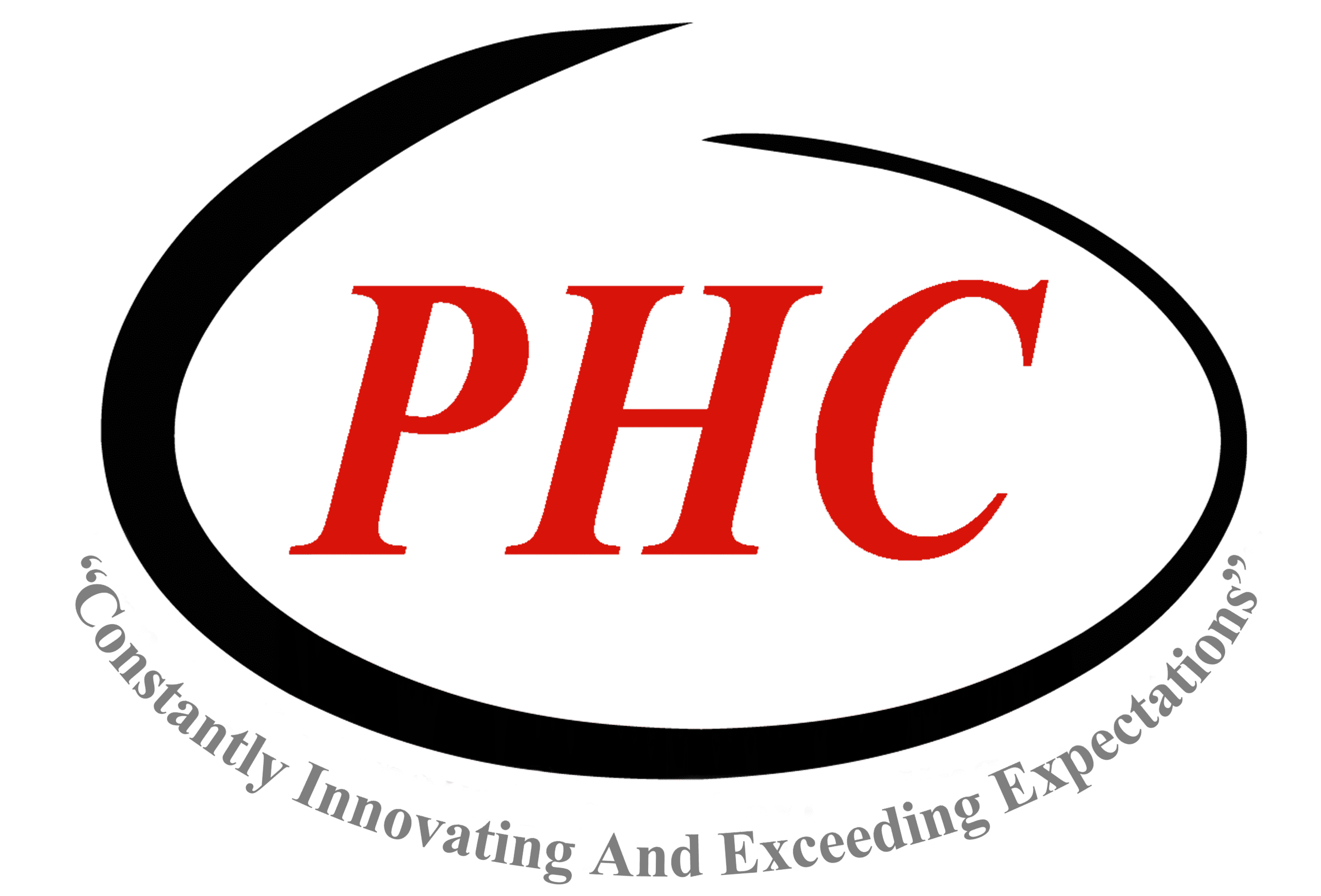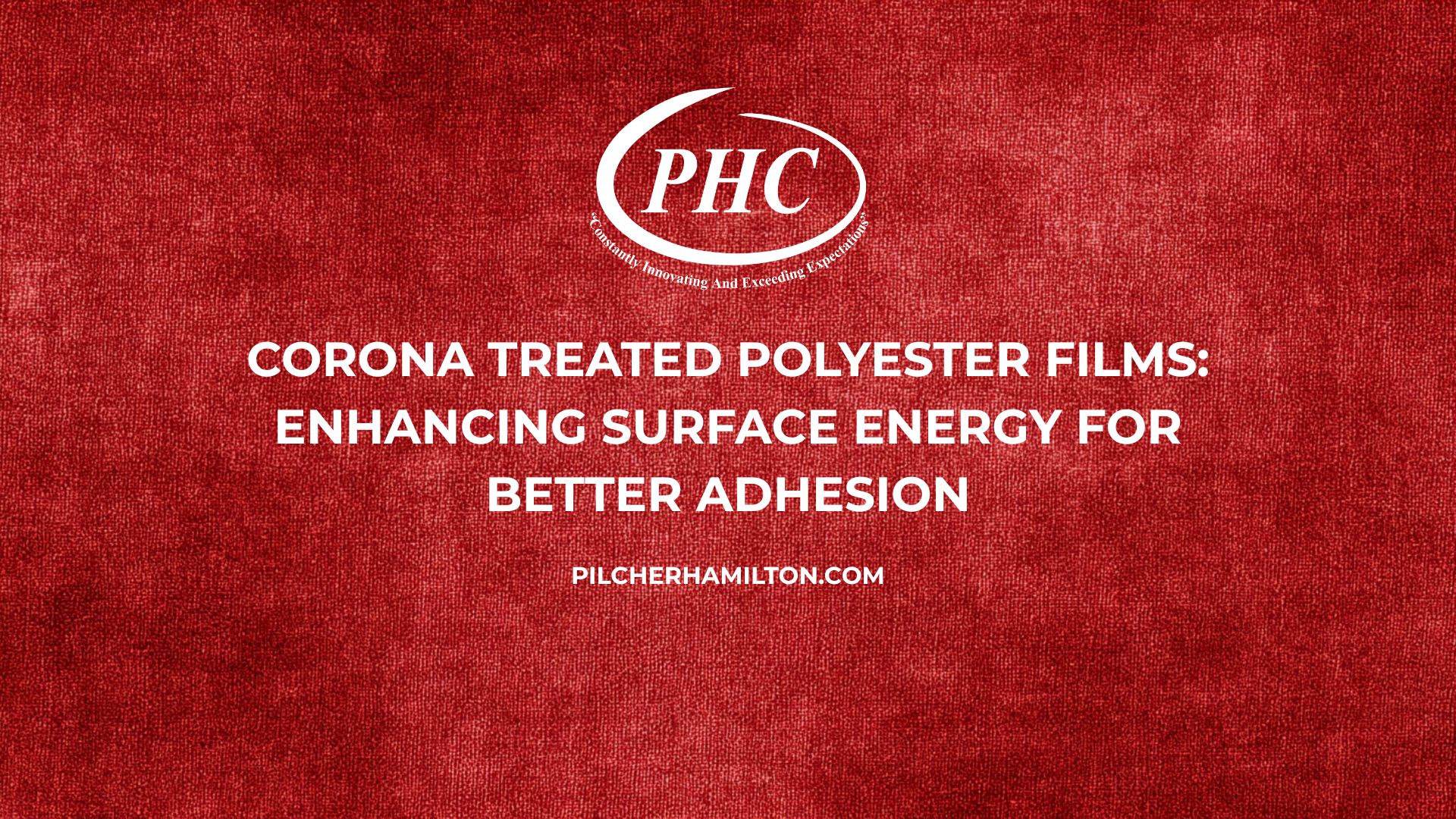When engineers and buyers search for polyester near me, they often need more than just generic PET. They need performance-driven materials engineered to bond, print, laminate, and seal reliably across packaging, graphics, and industrial markets. That’s where corona treated polyester films come in. By raising surface energy to the 42–56 dyne/cm range, these films allow adhesives, inks, and coatings to wet properly—unlocking adhesion reliability across demanding converting lines.
Pilcher Hamilton Corporation (PHC) specializes in supplying and converting corona treated polyester films (PET, BOPET) from gauges as thin as 12 µm (48 gauge) up to 250 µm (10 mil). With a U.S. converting hub in Greer, South Carolina, PHC delivers tailored roll formats, custom widths, and reliable surface treatments backed by decades of polyester expertise.
Key Takeaways
- Surface energy boost: Corona treated polyester films achieve 42–56 dyne/cm for reliable adhesion.
- Versatile gauges: Available from 12 µm (48 gauge) to 250 µm (10 mil).
- Applications: Printing, laminating, adhesive coating, metallizing, and packaging.
- Converting support: PHC offers slitting, sheeting, winding, and toll converting in the U.S.
What Is Corona Treatment and Why It Matters
Corona treatment is a high-voltage electrical discharge process that modifies the molecular structure of the polyester film surface. By breaking molecular bonds and adding polar groups, the surface becomes more receptive to inks, adhesives, and coatings.
- Untreated polyester films typically measure ~38 dynes/cm, insufficient for permanent adhesion.
- Corona treated polyester films typically reach 42–56 dynes/cm, enabling consistent wetting.
- Longevity: Dyne levels can decay over time, so treatment timing and handling matter.
Dyne Levels and Adhesion Performance
In the world of polyester converting, surface energy directly correlates to adhesion strength.
- Printing inks: Require ≥42 dyne/cm for sharp graphics.
- Lamination adhesives: Perform best with ≥44 dyne/cm.
- Coatings (silicone, acrylic, PVDC): Often need ≥46 dyne/cm for uniform coverage.
Table 1: Dyne Level Guide for Polyester Applications
| Application | Recommended Dyne Level (cm) | Notes on Performance |
| Flexographic printing | ≥42 | Sharp, smear-free graphics |
| Gravure printing | ≥44 | Rich, durable ink transfer |
| Solvent-based lamination | ≥44 | Strong interlayer bonds |
| Coatings (silicone, PVDC) | ≥46 | Even, pinhole-free laydown |
Applications of Corona Treated Polyester Films
Corona treated polyester films are versatile across industries:
- Packaging: For food pouches, snack wrappers, and lidding films, surface treatment ensures inks and laminates adhere during high-speed production. See PHC’s polyester packaging lineup.
- Graphics & Labels: For pressure-sensitive adhesive liners, corona treatment provides release uniformity and stable ink adhesion.
- Industrial Uses: Metallization (for barrier films), silicone coating (for release liners), and anti-fog/anti-static topcoats all depend on reliable adhesion.
- Barrier Structures: When paired with PVDC or metallized coatings, treated films extend shelf life by lowering OTR and WVTR.
Specifications and Buyer’s Checklist
When sourcing corona treated polyester films, buyers should confirm:
- Gauge range: 12–250 µm (48 gauge–10 mil).
- Base resin: BOPET, with stable thermal shrinkage (<2% at 150 °C).
- Dyne level: 42–56 dynes/cm, corona treated on one or both sides.
- OTR/WVTR values: As low as 2–3 cc/m²·day for barrier grades (when metallized or coated).
- COF range: 0.35–0.60 depending on slip treatment.
- Heat seal temp (if applicable): 350–420 °F depending on layer structure.
Buyer’s Checklist
☑ Correct gauge for your converting line
☑ Single- or double-side corona treatment specified
☑ Dyne levels verified with test inks or pens
☑ Barrier coatings compatible with corona layer
☑ COF and seal properties matched to machinery
Testing and Handling Best Practices
- Measure regularly: Dyne pens or test inks verify surface energy.
- Avoid contamination: Oils, dust, and handling can reduce adhesion.
- Storage: Use films within 6 months of treatment for optimal performance.
- Re-treatment: Films can often be re-treated inline if dyne levels decay.
Converting Support from PHC
PHC offers extensive converting services to make corona treated polyester films production-ready:
- Slitting to custom widths up to 140 inches.
- Sheeting for large-format sheets.
- Winding to specific OD/core sizes.
- Toll converting with confidentiality and quick turnarounds.
With millions of pounds of PET in stock, PHC ensures short lead times and consistent supply.
FAQ
Q1: What are corona treated polyester films?
Corona treated polyester films are PET/BOPET films that have undergone an electrical discharge treatment to raise surface energy, improving adhesion of inks, adhesives, and coatings.
Q2: How long do dyne levels last after corona treatment?
Dyne levels are strongest immediately after treatment and may decay within weeks to months. Films should be used within 6 months, or re-treated if necessary.
Q3: Can corona treated polyester films be combined with barrier coatings?
Yes. They are often metallized, acrylic-coated, or PVDC-coated to improve oxygen and moisture barrier performance.
Q4: How do I find corona treated polyester near me?
If you’re searching for polyester near me, PHC supplies and converts corona treated polyester films directly from Greer, South Carolina, with national distribution.
Q5: What gauges are available?
PHC supplies corona treated PET films from 12 µm (48 gauge) up to 250 µm (10 mil), depending on end-use.
If you need high-performance corona treated polyester films, Pilcher Hamilton Corporation is ready to supply and convert to your exact specifications. Whether you require tight dyne control for laminating, or broad converting support for packaging rollouts, PHC has you covered.
📍 Address:
850 South Buncombe Road
Greer – South carolina
Learn more about our products and services, or contact us today for fast quotes and expert guidance. Stop searching for polyester near me—PHC delivers directly from the USA.Visit our Contact and Locations pages.

